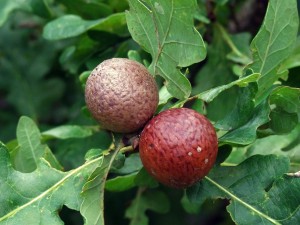Many Pagans, Wiccans, Polythesists, and others today mark Lughnasadh (pronounced LOO-nuh-sah or loo-NAH-suh; also sometimes called Lammas from the Christianized "loaf mass") on August 1 or August 2 in the northern hemisphere and on February 1-2 in the southern. Some eclectic traditions mark Lughnasadh according to the full Moon that is closest to August 1.Others celebrate it on the nearest weekend for convenience, especially if doing group or public ritual.
The roots of Lughnasadh come from old Celtic traditions, i.e., the Irish, Scot, Manx, Cornish, Welsh, and Breton peoples and probably from those of the Isle of Man as well. Many celebrants today follow traditional agricultural markers (based on extant records, folklore, etc.) rather than calendar dates when timing celebrations. Those practicing Celtic reconstructionist Druidism may locate Lughnasadh according to the appearance of the first late summer fruits or the first grain harvest in their home area. Here in the Pacific northwest, modern CRs use the blackberries to time agricultural Lughnasadh, while CRs on the east coast tend to use blueberries. For most modern practitioners, the emphasis is most often on the rhythms of life in one’s home area rather than on the calendar. For instance, rather than marking Beltaine on May 1, many CRs celebrate it once the hawthorn—or the appropriate local white-flowering tree—blooms. In CR practices, the sacred and mundane are not separate, and the most mundane daily activity is every bit as sacred as the carefully planned “high ritual.” Daily life is a form of spiritual practice, and hospitality is one of the most highly valued of these expressions.
According to Irish mythos, Lughnasadh marks a funeral celebration and feast thrown by the God Lugh (pronounced LOO) in honor of his foster mother, Tailtiu. Legend claims that she cleared much of Ireland’s plains to allow for farms to be started, after which she collapsed and died. (Yeah—I’d be tired, too.) The funeral games were subsequently called the Tailtin/Tailtiun games in her honor. Interestingly, because so many healthy, vigorous young people appeared for the games, Lughnasadh also became known as a prime time to make matches-- of the romantic rather than the gaming time-- with many handfastings following.
In folkloric terms—and those of traditional calendar customs—Lughnasadh more or less always marks the harvest of the local berries and of the first ripening grains.
Traditionalists may celebrate Lughnasadh in several ways, including some or all of the following:
1. The celebration is invariably communal. It was typical of the ancient Celtic peoples to gather as communities or even come from great distances for major celebrations, and this was often especially true at Lughnasadh as the weather tended to be better in summer than at the other cross-quarter holidays (although, the needs of one’s farm or animals always limited some from long periods of travel). The celebrations included feasting, games and tourneys (especially horse racing), and ritual fires.
2. The ancient Gods are appeased and thanked with offerings from the first harvest and with ritual. Lugh and Tailtiu, in particular, are often honored honored. Danu, the Irish mother goddess, is often mentioned at Lughnasadh as a benefactress.







 In the ancient days of the world, when all was still mostly froth and chaos, there lived two great Kings. The Oak King was the ruler of the places that were light, and the Holly King ruled the places that were dark. At first They feared one another; for the Holly King was the master of the places that the Oak King dared not go, and the Oak King was the master of the places that the Holly King dared not go. What secrets might the other be keeping? But the Goddess of the Moon and Stars knew Them both, and She bade Them to go to one another. “You’ll like Him!” She told each of Them with the twinkle of the stars in Her deep dark eyes. “You’ll see!”
In the ancient days of the world, when all was still mostly froth and chaos, there lived two great Kings. The Oak King was the ruler of the places that were light, and the Holly King ruled the places that were dark. At first They feared one another; for the Holly King was the master of the places that the Oak King dared not go, and the Oak King was the master of the places that the Holly King dared not go. What secrets might the other be keeping? But the Goddess of the Moon and Stars knew Them both, and She bade Them to go to one another. “You’ll like Him!” She told each of Them with the twinkle of the stars in Her deep dark eyes. “You’ll see!”











